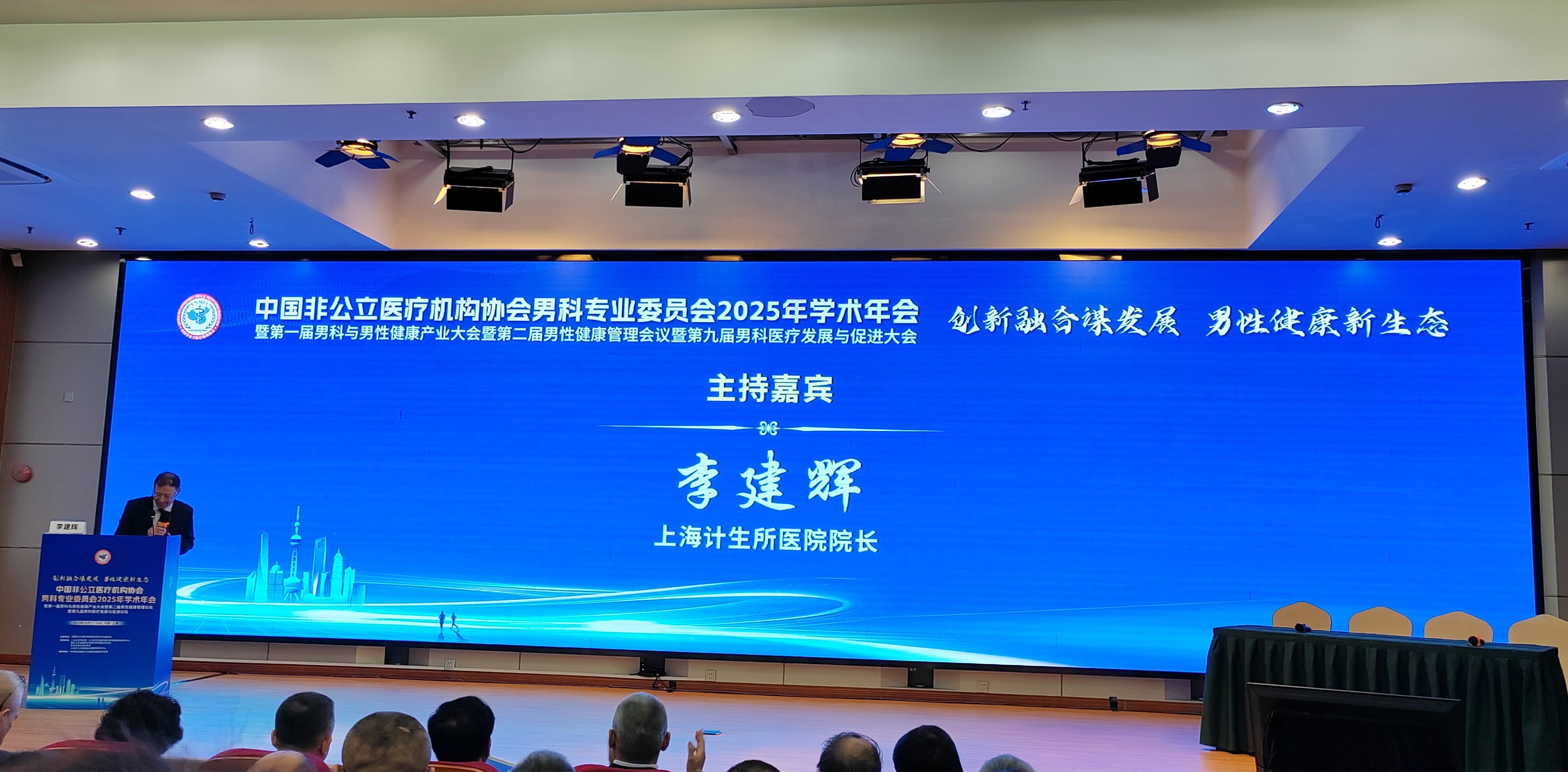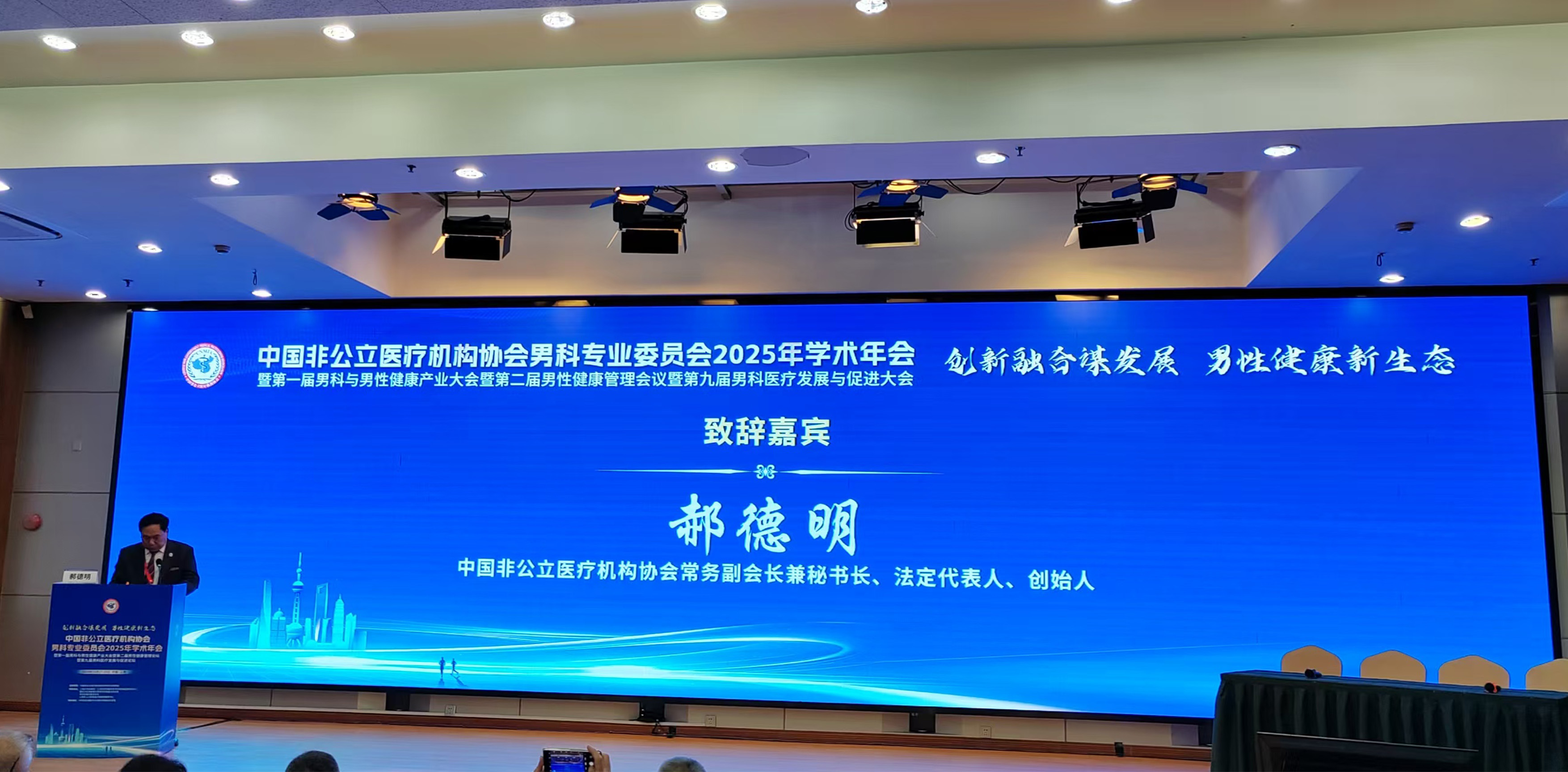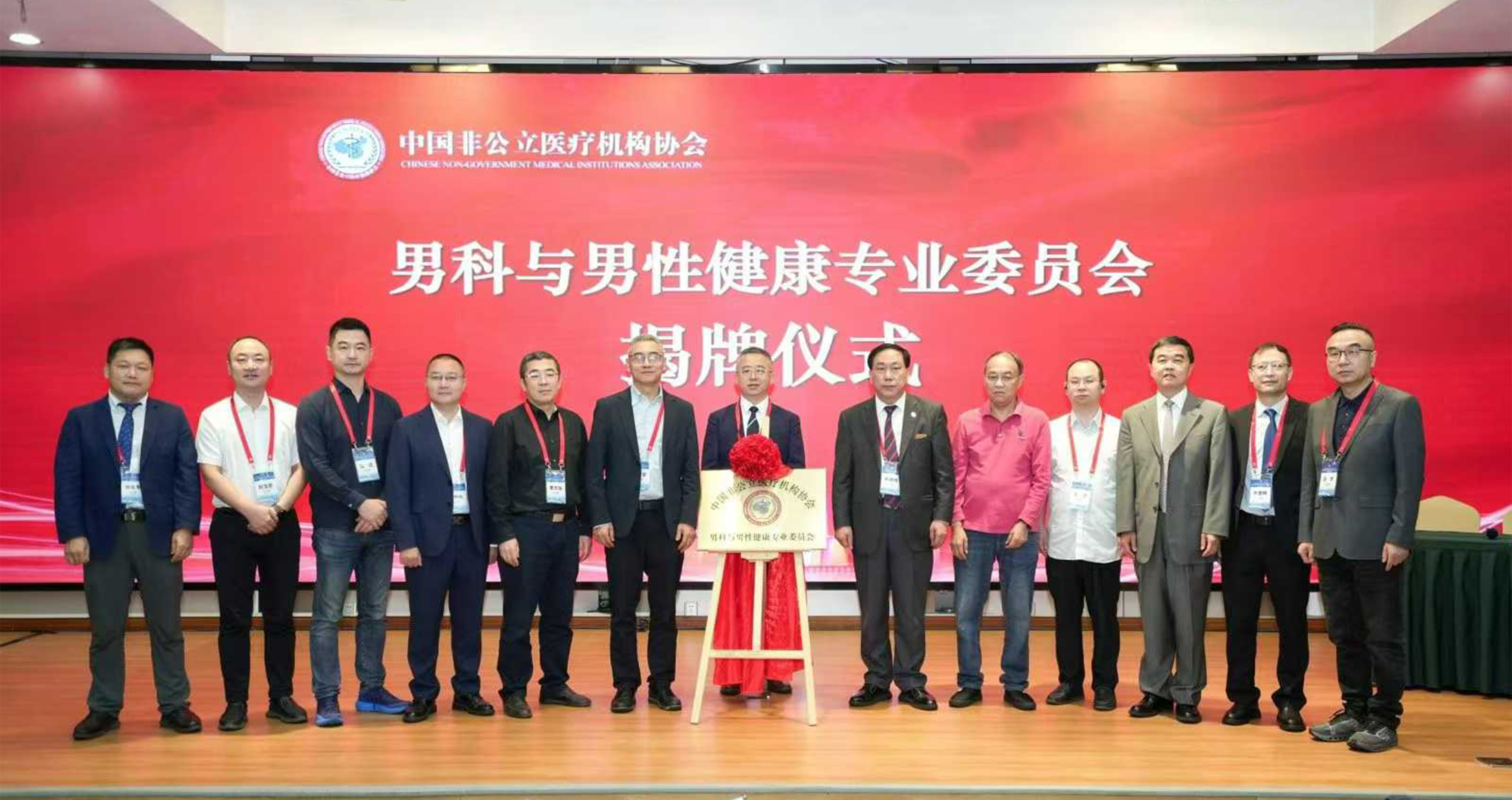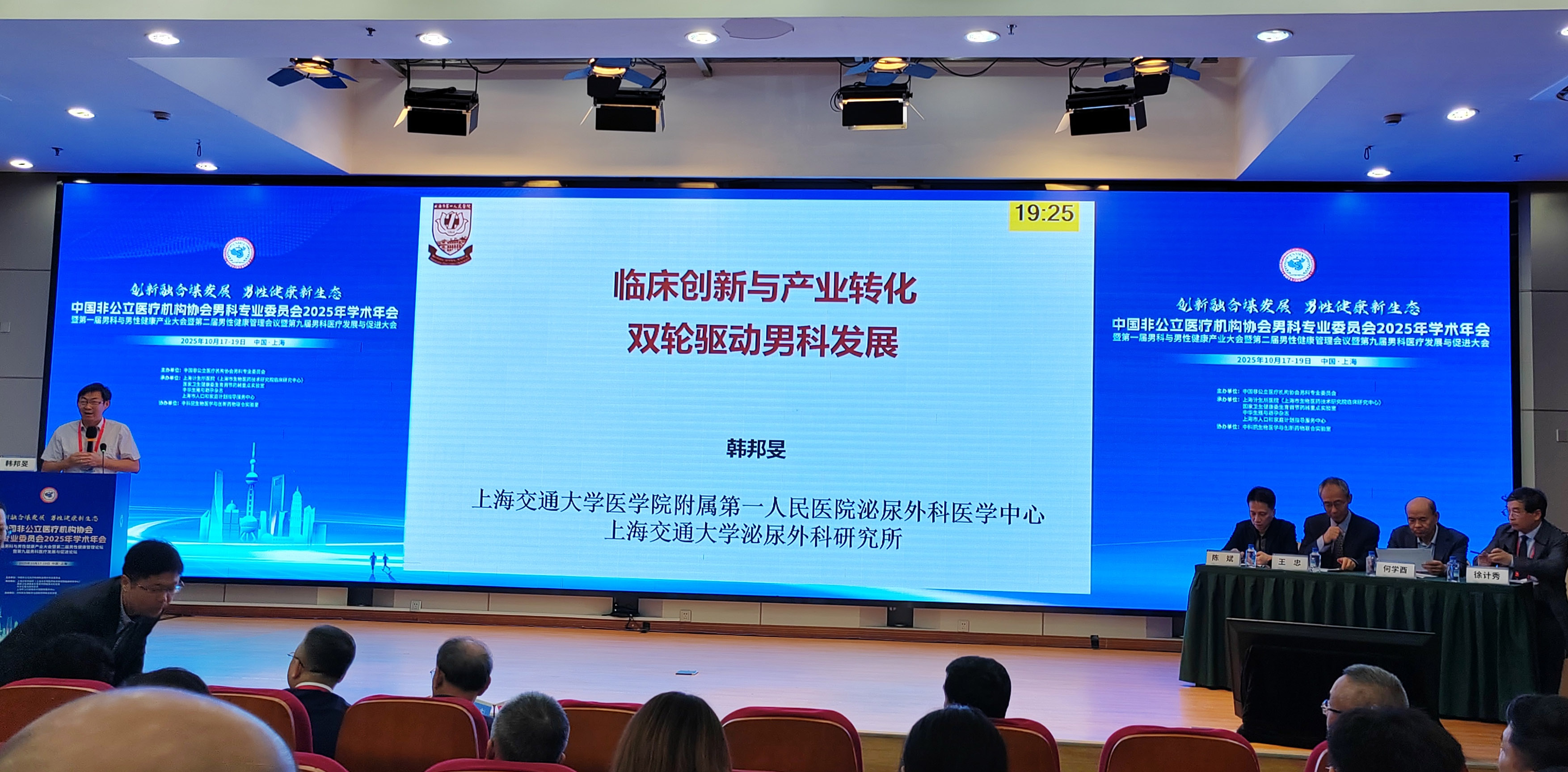
From October 17 to 19, 2025, the China Non-Public Medical Institutions Association Urology Professional Committee 2025 Academic Annual Conference, the 1st Urology and Men's Health Industry Conference, the 2nd Men's Health Management Forum, and the 9th Urology Medical Development and Promotion Forum were successfully held in Shanghai. The theme of this conference was "Innovating and Integrating to Drive Development, Building a New Ecosystem for Men's Health," bringing together industry experts, medical institutions, and innovative enterprises to explore cutting-edge technologies in urology and pathways for industry transformation.


Experts from Multiple Fields Discuss the Future of the Industry

The opening ceremony of the conference was hosted by Li Jianhui, President of the Shanghai Institute of Population and Family Planning. Guests including Hao Deming, Executive Vice President of the China Non-Public Medical Institutions Association, Zhao Jian, Director of the Shanghai Institute of Biomedicine, and Shang Xuejun, Chairman of the Urology Branch of the Chinese Medical Association, delivered speeches. Hao Deming emphasized that non-public medical institutions should promote standardized urology services and technological innovation through the integration of "medicine and engineering" and the deep fusion of "industry, academia, research, and application." Zhao Jian, from the perspective of biomedical technology, proposed the vision of constructing a men's health management system throughout their entire life cycle.





During the opening ceremony, the China Non-Public Medical Institutions Association Urology and Men's Health Professional Committee was formally unveiled, marking the upgrade of the original Urology Professional Committee to a comprehensive organization covering all areas of men's health. The new committee will integrate clinical diagnosis and treatment, scientific research innovation, industry transformation, and health management resources to promote the professional, standardized, and ecological development of the industry.

Clinical Innovation and Industry Transformation Driving Forces

Professor Han Bangmin from the First Affiliated Hospital of Shanghai Jiao Tong University School of Medicine gave a keynote speech on "Clinical Innovation and Industry Transformation Driving Urology Development." He shared groundbreaking practices in the field of prostate cancer diagnosis and treatment.

He pointed out that the team, through the establishment of an individualized follow-up rehabilitation database and with funding from the Shanghai Health Three-Year Action Innovation Program, pioneered the application of low-intensity pulsed ultrasound (LIPUS) technology to prevent and treat postoperative urinary incontinence and erectile dysfunction (ED). Among them, the "LIPUS Low-Intensity Pulsed Ultrasound ED Chamber" developed independently by WBL Company became the focal point. This device, with its non-invasive, safe, and effective characteristics, provides a new treatment solution for ED patients and those suffering from postoperative urinary incontinence after prostate surgery, filling the technological gap for non-invasive treatments in China.

WBL LIPUS Technology Principle and Treatment Effects

The core mechanism of WBL’s LIPUS technology is the application of low-energy pulsed ultrasound (sound intensity range 50-350mW/CM²) on the erectile tissue, which activates endogenous stem cells, promotes vascular and nerve regeneration, and repairs damaged vascular endothelium and nerve matrix, thereby improving erectile function at the pathological level. Compared to traditional oral medications (such as PDE5 inhibitors), implant surgeries, or invasive therapies (such as cavernous body injections), WBL’s LIPUS, as a non-invasive treatment, avoids drug dependency, associated side effects, and surgery-related complications.

Empowering Men's Health Management through Technology

At the conference, WBL set up a dedicated exhibition booth, becoming an important platform for interaction between clinical experts and industry representatives. Many urology experts visited the booth, engaging in deep discussions on the clinical application of LIPUS technology in urology diagnosis and treatment, the commercialization of the equipment, and related topics. They also explored the treatment solutions developed by WBL based on LIPUS technology in detail, focusing on actual clinical needs.

Opening a New Chapter for Clinical and Industry Integration
This conference was not only an academic feast but also a link for industry collaboration. Experts at the event called for breaking down institutional barriers and promoting the integration of resources from public hospitals, non-public medical institutions, research institutes, and enterprises. The successful application of WBL's LIPUS technology serves as a model for collaborative innovation between clinical experts, engineering teams, and industry capital.
In the future, with the popularization of non-invasive treatment technologies and the improvement of health management systems, the male health industry will have even broader development potential, injecting new momentum into the "Healthy China" strategy.